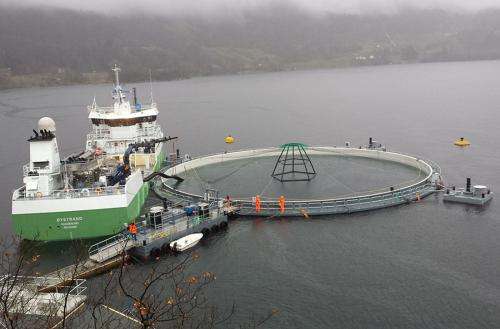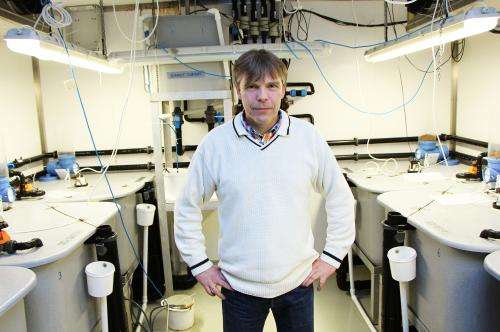Fish farming: High survival rate for post-smolt in closed farming facilties

Problems with lice and losses can be heavily reduced by placing farmed fish in closed systems until the fish reach a weight of one kilo.
This has been shown by research conducted by scientists at Uni Research in Bergen, Norway.
"The open sea phase is reduced by half by keeping the fish in a closed system until they weigh up to one kilo. Salmon lice consequently only have half the time they need to complete their life cycles."
"We weaken the opportunities available to the lice to reproduce and also reduce the contact risk time," says senior researcher Sigurd Handeland at Uni Research Environment.
Post-smolt means the smolt of Atlantic salmon which have been transferred from fresh water to sea water. This term is used during the sea phase and up until the fish reach a weight of 1 kilo.
Improving health of farmed fish
At the moment partially closed or closed systems are at the trial stage.
However, both Handeland and his colleague, research group leader Lars Ebbesson at Uni Research Environment, think that the potential benefits from using such solutions are considerable.
"Norway is a fishing and shipping nation and we need to think about the future. By using closed systems we can look after both wild and farmed fish even better than we do today."
"The fish farming industry needs to think about sustainability, but it will undoubtedly benefit from a development which involves improving the health of farmed fish and reducing the environmental impact," says Ebbesson.

With efficient control of lice problems, it will be key for researchers to study how closed systems can function as well as possible biologically so that the fish develop well and healthily.
"During the first growth phase of up to 1 kilo the losses suffered in the Skånevik tank have been less than 1%. This is actually incredibly low. In most ordinary seas systems the losses can amount to 10-12% and in some cases up to as much as 20%.
The results he is referring to are from the Research Council's Optimised Post-smolt Production project (OPP), which has involved cooperation between the industrial partners Marine Harvest, Lerøy, Grieg Seafood and Smøla klekkeri og settefisk.
This project, which involved studying fish with a weight of up to 1 kilo in Skånevik, Hordaland, was concluded more than six months ago.
Other challenges
However, even closed systems have their challenges: on 27 October Marine Harvest announced that they had decided to conclude the second growth phase after the fish suffered damage to their gills as a result of poisonous algae and a subsequent outbreak of amoebic gill disease.
"The results for post-smolt are very encouraging. At the same time this event shows that we need more research to be conducted on the development of closed systems in respect of technical developments, optimised production and better fish health," says Handeland.
SFI to be established
Uni Research, in cooperation with the research institute Nofima and the University of Bergen, is now setting up a Centre for Research-based Innovation (SFI) in order to acquire even more detailed knowledge about how the fish farming industry can benefit from keeping fish in semi-closed or closed systems for part of their life cycle. Nofima is hosting the SFI.
Handeland says that the research within the SFI will be divided into three areas. The area Uni Research is responsible for, will be led by research group leader Lars Ebbesson. It includes production biology, optimising growth and securing good health and welfare.
"Based on the results achieved so far I hope and believe that we will receive confirmation showing that closed systems will at least be a very good solution for fish until they reach a weight of 1 kilo," says Handeland.
"In the even longer term we could also discover whether or not closed systems are beneficial for weights of up to 4 kilos," he adds.
One of the big challenges
Handeland believes that it is the right time to make a strategic commitment with intensive research conducted during the forthcoming years - even though the fish farming industry is already focusing on sustainability.
"The industry cannot solve lice problems and all the other challenges that it faces on its own. This is where researchers like us come into the picture, he says.
Handeland is fully supported by Lars Ebbesson:
"The lice problem is one of the big challenges being faced by the industry and one of the biggest threats to fish health. It is otherwise very important to realise that closed systems would not just help the large fish farms along the coast, but the small farms as well."
Provided by Uni Research



















